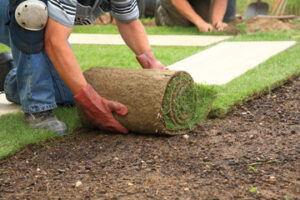The ceiling is an overhead interior surface covering the upper limit of a room or other structure. It can be plain or decorative.
A high ceiling can make a small room feel larger & a large room feel even more spacious. But it can also cost more to heat & cool a space and can be difficult for shorter individuals to reach for light bulbs or to clean. Contact Ceilings Perth now!

Wood beams on ceilings are a popular design feature for traditional and contemporary styles alike. Properly installed and stained, wood beams insert structural elegance into a room and add warmth to the space. They can also create a focal point that’s both striking and memorable.
Beams on a ceiling are often called joists or rafters, depending on whether they’re functional or decorative. If they’re functional, they run horizontally across a ceiling and help support the roof, while rafters are sloped to follow the pitch of the roof. If they’re purely decorative, they can be called wooden beams or faux beams and are available in a range of sizes, styles, and finishes.
A beamed ceiling can be constructed with either wood or steel. Structural steel beams are heavy, and they require an engineer’s approval to be used as exposed ceiling beams. To avoid this hassle, a modern vaulted ceiling is usually built with scissor trusses and then covered with drywall. Faux beams can then be added to the drywall for a rustic appearance. Molded fiberglass or polystyrene faux beams are lightweight and can be stained before installation.
Reclaimed wood beams are an excellent choice for a beamed ceiling because they exhibit visible crosscut marks and a rugged look. These features give them an Old Country style that complements a farmhouse, mountain cabin or woodland cottage. A more subtle approach is to coat beams with limewash paint for a softer color palette that suits coastal decor. This technique rejuvenates the wood for a fresher, more enduring finish.
Another option is to use steel I-beams as exposed ceiling beams. These are surprisingly light and versatile for such an industrial style. They can be left raw and unstained for a streamlined, modern decor or painted for a more traditional or contemporary feel. Structural metal beams, however, can have more deflection distance than is code-safe or desirable and can lead to sagging of the ceiling.
A coffered ceiling has a grid of square or rectangular boxes that form patterns similar to those of a waffle-type pattern. This ceiling design can make a room look taller and more interesting, and it also helps absorb sound that might otherwise bounce off a flat ceiling. It’s an ideal design for bedrooms and family rooms, where the sound absorption can reduce noise from other parts of the house or workplace.
Flat Ceilings
Whether you’re building your dream home or enhancing an existing one, it’s important to think beyond the four walls of your space. Ceilings impact the overall feel of a room, how much light comes in and even your home’s resale value. For this reason, you should be aware of the different types of house ceilings that are available for your custom home or renovation project.
The most conventional and cost-effective type of ceiling is a standard flat ceiling, which is typically finished with drywall and painted just like the walls in your house. This is an easy construction style that can give your space a clean and simple aesthetic that is perfect for minimalist and transitional homes.
While a traditional flat ceiling is the best choice for many homes, some homeowners opt for a textured look to add a bit of interest to their spaces. While this is still common in some modern houses, it’s important to consider the drawbacks of a textured or popcorn ceiling before making the decision.
If you’re considering a textured ceiling, be prepared to invest time and money into maintenance. When it comes to repairing this type of ceiling, you will need to re-texture the entire area if a section is damaged. Re-texturing isn’t as easy as simply applying a new coat of paint, and it requires skill and patience to achieve a seamless surface.
Another consideration is that a textured ceiling is less energy efficient than a smooth ceiling. This is because heat rises, which means more of your furnace’s energy is being used to keep the space warm.
For those that don’t want to invest in a full flat or coffered ceiling, tray ceilings are an excellent option. Similar to a flat ceiling, this design includes a recessed section that is a few inches lower than the surrounding area. This can include a single tray or multiple trays nested together to create a graduated effect.
Tray ceilings are usually made of a combination of wood and steel, which adds both style and functionality to your custom home. While a tray ceiling can be used in conjunction with vaulted ceilings, it is often most common in smaller rooms because of the extra light it provides.
Slope Ceilings
Sloped ceilings may seem like a challenge to work with, but there is plenty of design potential for a living space with a sloped ceiling. Sloped ceilings add a unique character to a room and can create a beautiful focal point. Sloped ceilings can also make a room feel more spacious by adding height to a living area. Depending on how they are designed, these ceilings can even help with the overall lighting in a room.
Slopped ceilings can be made of any material, including wood, steel, or plaster. They can also have a variety of finishes, such as paint, stain, or natural finish. They are often found in older homes and some newer buildings. Sloped ceilings are also common in attic rooms and loft spaces.
When it comes to installing a ceiling in a home with a sloped roof, it is important to check local building codes. The code regulates how high a sloped ceiling can be before the space underneath it is no longer considered living space. In most cases, a ceiling must be at least 7 feet high in order to qualify as living space.
If you’re looking to install a sloping ceiling, it is important to use a qualified designer to ensure the proper design. A professional will consider your budget and lifestyle as well as the location of your home when preparing a sloped ceiling design. They will also make sure to follow all regulations when it comes to fire safety.
Sloped ceilings are commonly used in bedrooms and living rooms. They can also be used in kitchens. However, it is important to remember that sloped ceilings require a lot of light, which can be difficult to provide. This is especially true in a kitchen, where task lighting is essential.
There are a few ways to light a sloping ceiling, including using recessed lights. A recessed light fixture can be installed on the wall or ceiling, and can be either fixed or adjustable. Fixed recessed lights are cheaper, but they do not adjust to the slope of a ceiling. Angle-cut fixtures are more expensive, but they can be adjusted to match the slope of a ceiling.
Shed Ceilings
A shed ceiling is a sloped ceiling that begins at a high point at one wall and slopes down toward the other wall. Shed ceilings can create a unique look for a home and offer designers some flexibility with their construction. The type of wood used to form a shed ceiling can be varied and often includes heavy beams. These heavy beams can either be load-bearing or decorative. For load-bearing beams, a specialized joist system is often employed to add strength to the structure of the room below. For decorative beams, a variety of materials can be used, including reclaimed barn boards or prefabricated roof trusses.
Shed ceilings often require more structural support than do flat or vaulted ceilings, since they have a higher center of gravity. Because of this, they may also be more expensive to construct and install. To reduce costs, builders sometimes use prefabricated roof trusses to frame the shed ceiling. This method is faster and less labor-intensive than building individual joists, but it still requires a significant amount of work to complete the job.
When a shed ceiling is constructed with a truss system, it can be a good choice for a homeowner who wishes to use the space for storage or living purposes. It can also be a good choice for homeowners who want to incorporate natural lighting into their homes, since the shed roof’s slope can allow for floor-to-ceiling windows, particularly those located closest to the high walls of the house.
However, homeowners should carefully consider the position of their shed ceilings when considering window placements. A too steep incline can limit the amount of natural light that enters rooms, while an excessively flat angle can compromise the integrity of the roof. The optimum slope for a shed ceiling should be determined by conducting a thorough analysis of the sunlight and weather conditions in a given area to ensure that the shed ceiling will provide optimal lighting for indoor spaces while avoiding sun glare and maximizing energy efficiency. To do this, a roof expert should be consulted.





